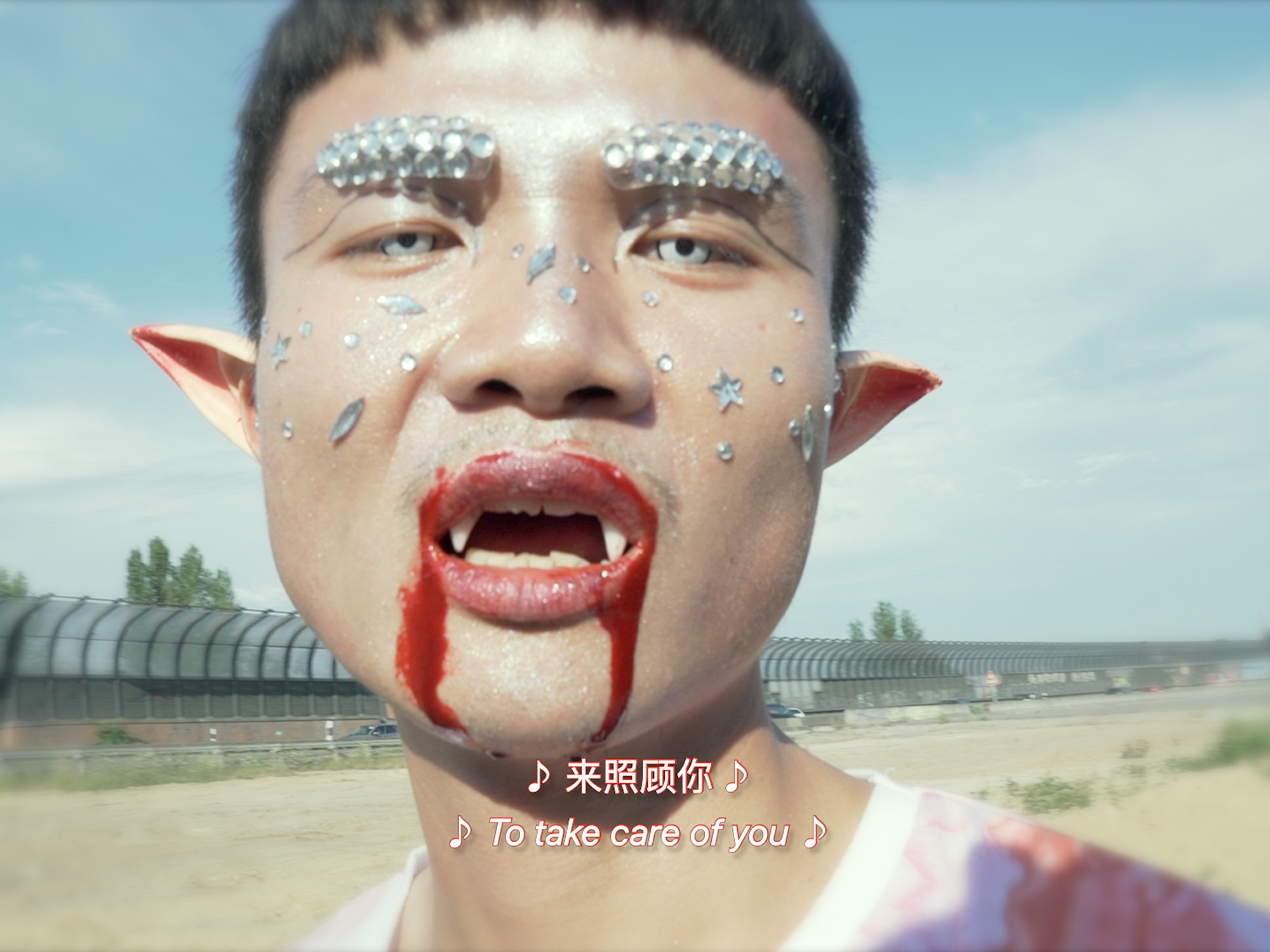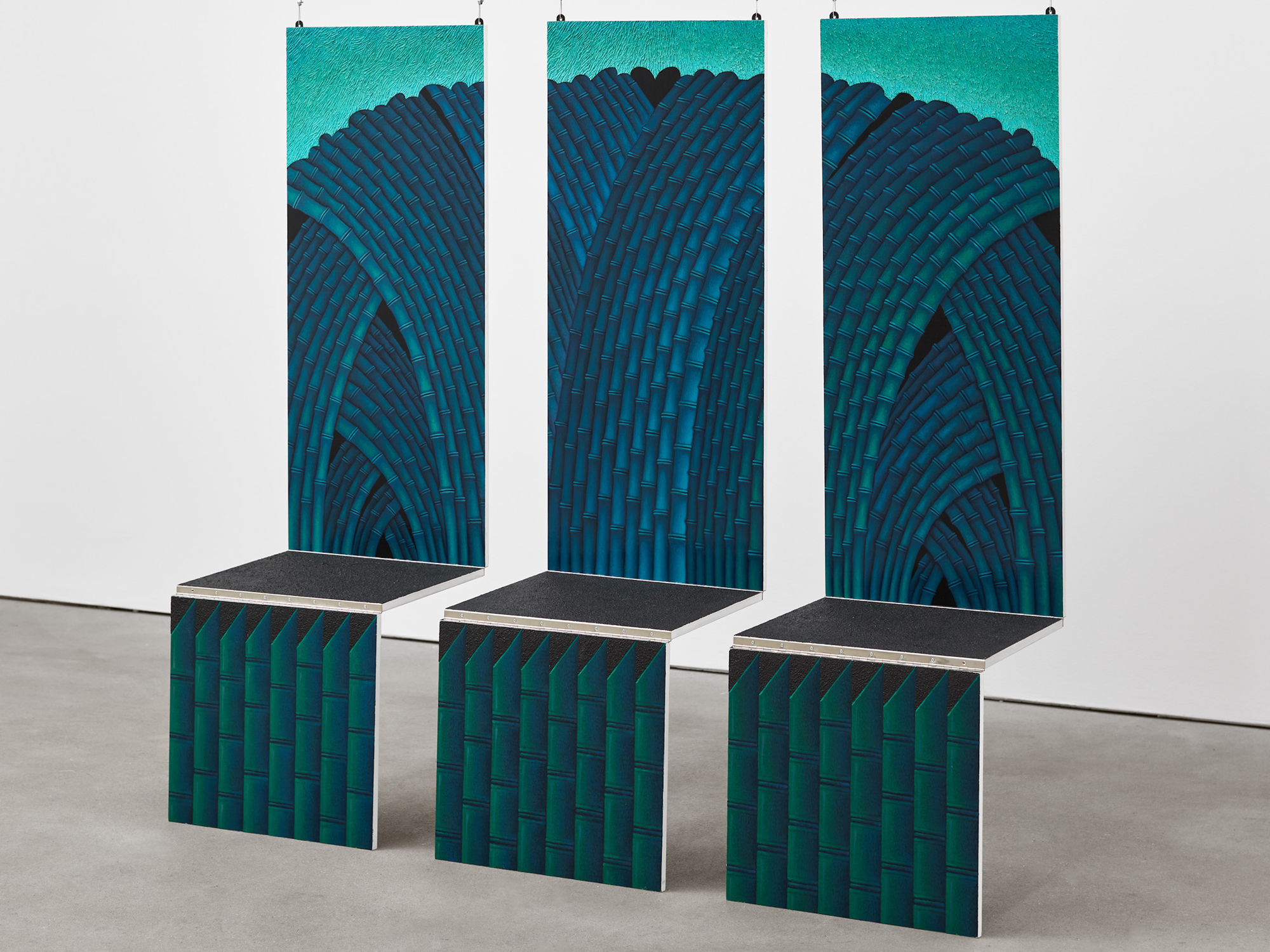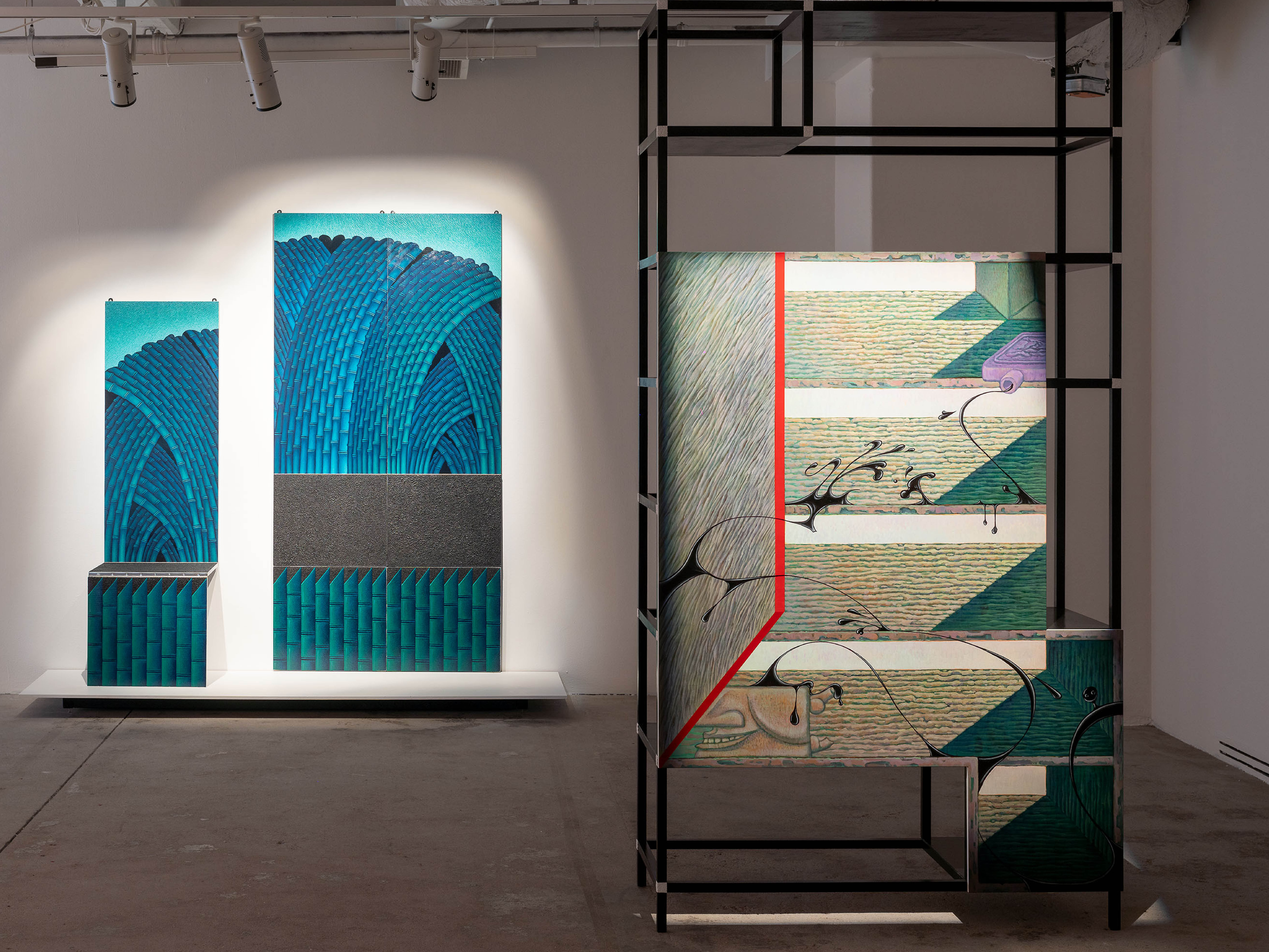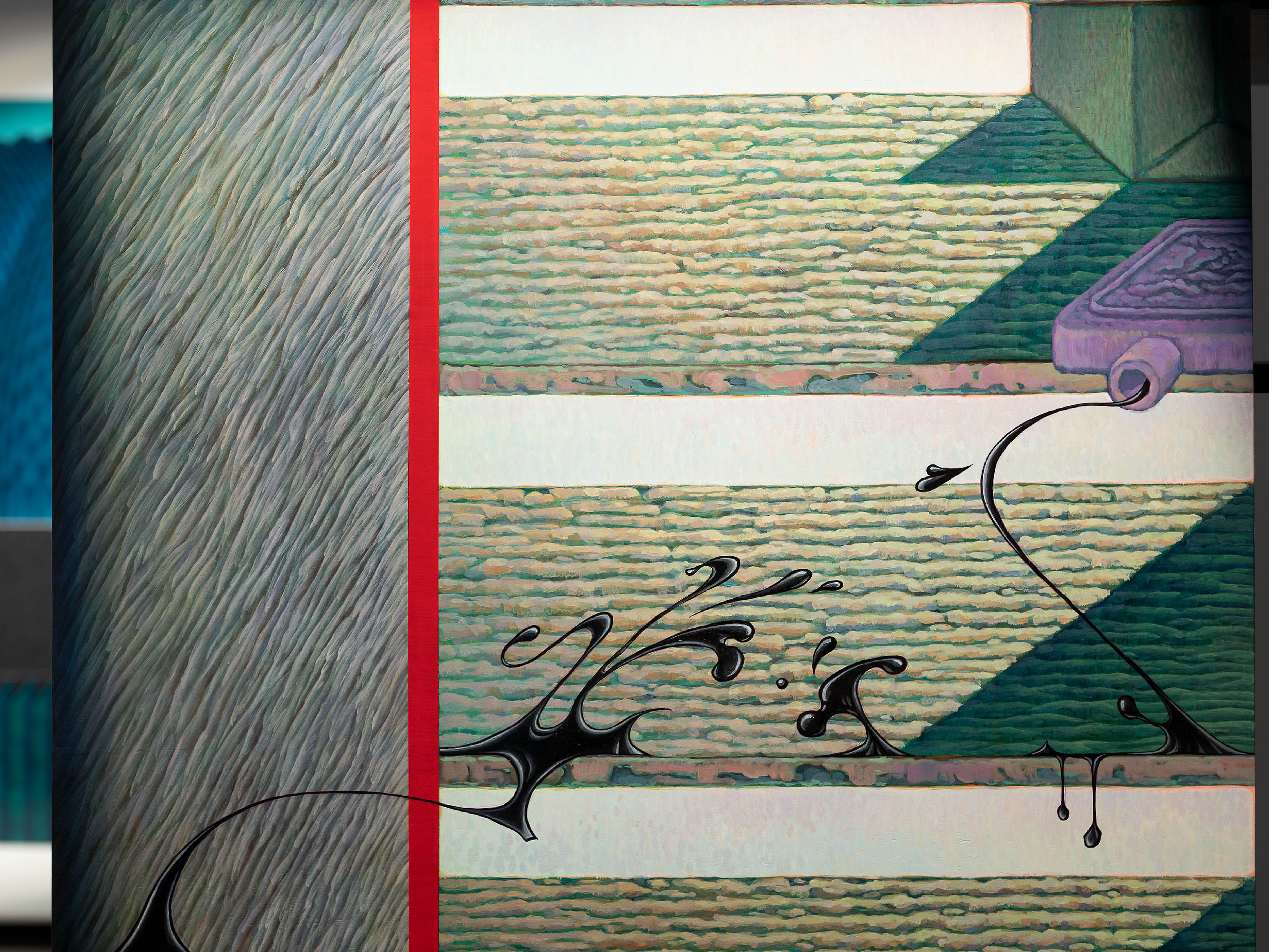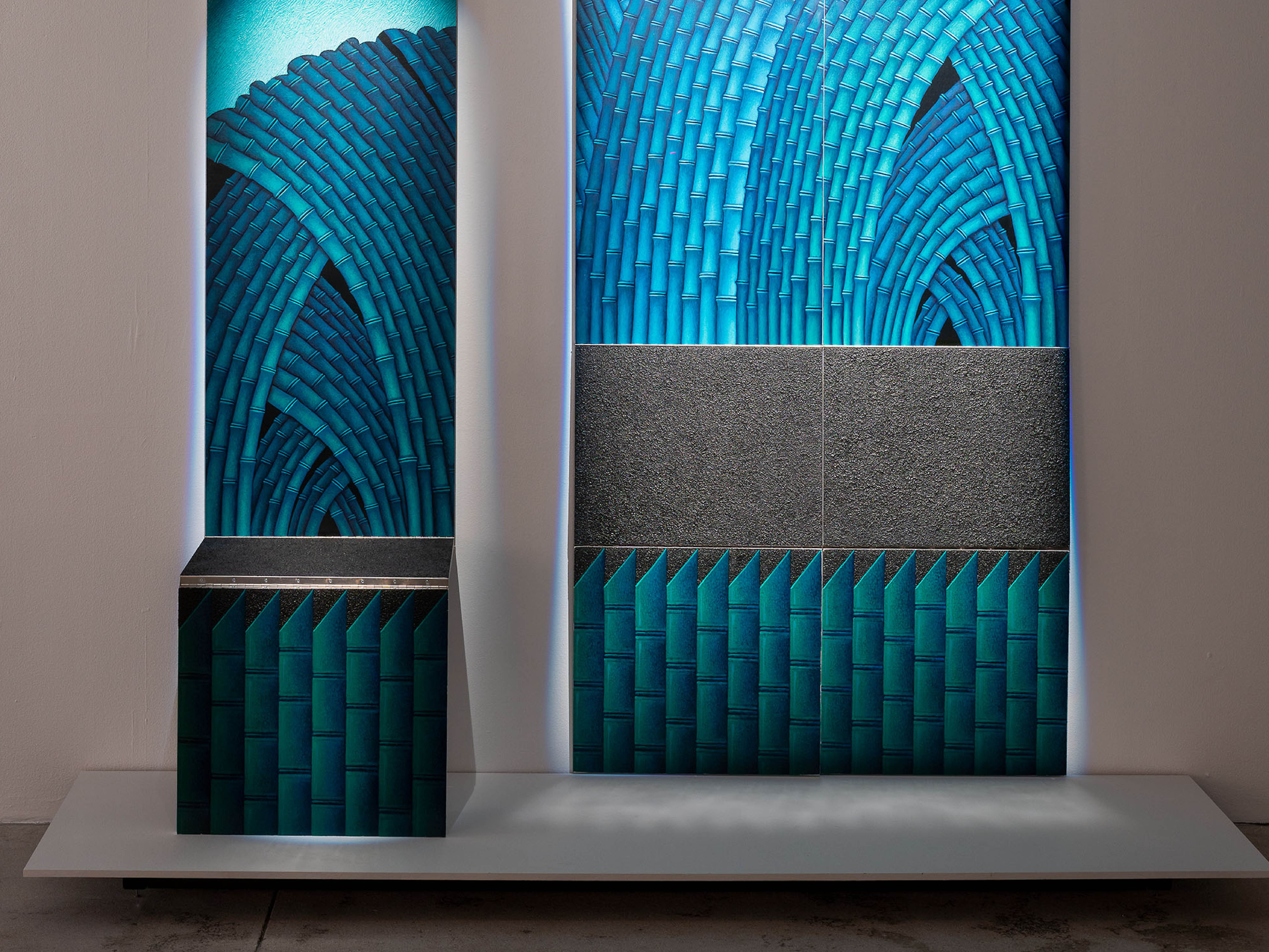a break (by the bamboo wave)
2021
Acrylic, sand, varnish, gesso on wood panel; stainless steel hinge.
Yong Xiang Li’s practice emphasizes the style of transmutation within the asymmetries of historical and contemporary cross-cultural exchange. By playing with the conflation of decoration and Orientalism, Li gently pulls apart the Orientalist gaze constantly lurking in Euro-American modernism.
These chair-like objects are foldable, giving them a utilitarian quality of modernist modulation, which is then shamelessly transcended by delighting in their own meaning-laden superficiality. Among others, a break (by the bamboo wave) references Charles Rennie Mackintosh’s Hill House Chair (1888) and its unapologetic impracticality; the frozen drama of a fleeting moment depicted in Gustav Courbet’s wave paintings (1869-1870); and the illusionistic painting of Wang You Xue, a student of Giuseppe Castiglione, who was responsible for a particular vein of ‘Western painting’ that was translated in service of the Qing Dynasty (1634-1912) court.
Supported by: Institut für Auslandsbeziehungen
Courtesy of: Antenna Space, Shanghai; Deborah Schamoni, München
Hydraulic Masc I
2021
Oil, acrylic, varnish, sand on wood panel; pine
Hydraulic Masc I mounts textures of wood panels, ornamental patterns, splashing paint, interior objects, and fragmented figures on shelf-like structures. The imitation of ebonized furniture with emphasized white “joints” recalls English designer Edward William Godwin’s sideboard (1867-70) of his famed Anglo-Japanese style. The “hydraulic” in the title is a reference to sinologist Karl August Wittfogel’s cold war polemic Oriental Despotism: A Comparative Study of Total Power (1957), in which the author argues that in “Oriental” societies, top-down and bureaucratic structures are necessary for irrigation and flood-control – an argument used to justify Wittfogel’s perpetuation of knowledge-based violence on promoting Western geopolitical centrality.
Supported by: Institut für Auslandsbeziehungen
Courtesy of: Antenna Space, Shanghai; Deborah Schamoni, München
BIOGRAPHY
Yong Xiang Li works with three-dimensional painting. Citing the aesthetic history of exoticism in Western art and design, and the mistranslation of aesthetics of the “Far East”, Li offers a pluralistic exploration of the politics of surface. In this, the surface is always placed “in relation to” or “in service of” to queer the power relation between the decorative, the object and labour.
Li has recently exhibited at: UCCA Edge; LC Queisser; Bundeskunsthalle Bonn; Museum Brandhorst; FUTURA Centre for Contemporary Art; Sadie Coles; Antenna Space; Portikus; and Galerie Emanuel Layr
VENUE
Röda Sten Konsthall

